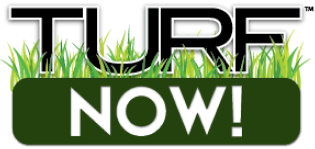Common Myths About Artificial Turf
As an industry leader in synthetic turf for more than 40 years, we at Turf Now!® have heard it all when it comes to the debate over artificial grass vs. natural grass. One thing that we have noticed is the abundance of myths about synthetic lawns that reside at the core of every argument. This fact sheet is meant to debunk some of the common misconceptions surrounding artificial turf and provide some education about our product.
1.) Myth #1: Synthetic Lawns Contain Lead and Poisons That Can Cause Harm to Pets and Children
This myth likely originated with the cheap plastic fake grasses of the late 1960s. Not only did those lawns look and feel fake, but they also contained lead and toxic metals – as most industrial items back in those days did. Pioneers in the artificial grass industry, such as Turf Now!®, worked to create a better-looking and safer turf. Most artificial lawns use materials such as Polyolefin, and numerous health organizations have established their safety to humans and animals alike. In fact, Turf Now!® Los Angeles products replace more than 60 percent of the petroleum base polyurethane with soybean oil, and much of the base of our synthetic turf is made from recycled material. Field tests completed in 2007 on aged synthetic turf fields also show that the material forming the base of the turf leached less than half of the amount of zinc found in rainwater, more evidence that synthetic turf is at least as safe for the environment as natural rain.
In contrast, a study by the National Wildlife Federation found that more than 70 million tons of fertilizers and pesticides are used on natural lawns and gardens in the US every year – ten times the amount of fertilizers and pesticides used by US farmers every year. Not only are these pesticides responsible for an average of seven million bird deaths each year in the US alone, but are also the causes of at least 200 calls to Poison Control each year regarding accidental pet ingestion of lawn pesticides. Artificial lawns do not need fertilizers and require far less water than natural lawns. Turf Now!® grass is a low environmental impact product that needs to be replaced and recycled less than other turf products, is 100% lead-safe, and in terms of durability, our manufacturing process creates turf that causes our lawns to stand the test of time.
2.) Myth #2: Artificial Lawns Are Unsafe For Athletes
As synthetic turf evolved into the high quality product we have today, athletes and spectators began a never-ending debate on the pros and cons of both synthetic and natural grass. One common argument from those that resist artificial turf is that somehow turf causes more injuries than natural grass. This is false. A five year study comparing artificial turf to natural grass showed that artificial turf had 55 percent fewer neural injuries, 45 percent less time lost to injuries (a difference of 22 days), 47 percent fewer cranial injuries and 38 percent fewer third degree injuries than natural grass.
Realistically, synthetic grass provides more cushion-support than regular grass, making it a strong candidate for use in playgrounds and sports fields. It is also extremely hypoallergenic and pest-resistant. This prevents harmful bugs, such as ticks, from spreading disease to those who play in the grass.
3.) Myth #3: Artificial Grass has Poor Drainage:
Good quality synthetic turf, such as the products Turf Now!® offers, has a very high drainage rate – at 30 inches per hour, our synthetic turf may drain more efficiently than natural grass. Rainwater and pet waste does not pile up, but drains easily. And our product is equipped with odor-blocking technology to dispose of the smell of pet urine.
4.) Myth #4: Artificial Turf Looks Fake
Below are two different lawns. One is natural and the other is synthetic. Which is which?


If you guessed that picture A is natural grass and that picture B is a Turf Now!® LA installation* of artificial grass in Encino, California, then you guessed correctly. The difference is that the real grass requires at least thousands of gallons of water and hundreds of labor hours per year to maintain, while the artificial turf uses radically less water and only needs minimal maintenance.
To learn more about the advantages of installing* Turf Now!® synthetic turf, explore our website at www.TURFNOW.com. You can also find out about our specialized products, such as pet turf, putting greens and commercial applications, as well as view a photo gallery of projects we have completed over the years. Call Turf Now!® LA today at 844-739-5296for a free estimate.

